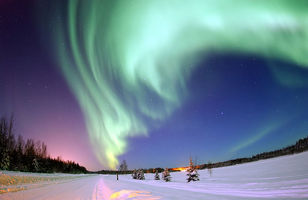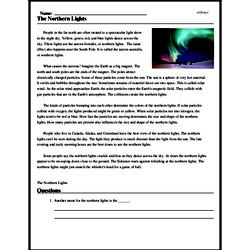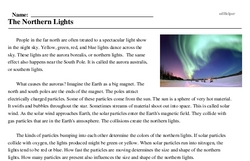The Northern Lights
People in the far north are often treated to a spectacular light show in the night sky. Yellow, green, red, and blue lights dance across the sky. These lights are the aurora borealis, or northern lights. The same effect also happens near the South Pole. It is called the aurora australis, or southern lights.
What causes the auroras? Imagine the Earth as a big magnet. The north and south poles are the ends of the magnet. The poles attract electrically charged particles. Some of these particles come from the sun. The sun is a sphere of very hot material. It swirls and bubbles throughout the star. Sometimes streams of material shoot out into space. This is called solar wind. As the solar wind approaches Earth, the solar particles enter the Earth's magnetic field. They collide with gas particles that are in the Earth's atmosphere. The collisions create the northern lights.
The kinds of particles bumping into each other determine the colors of the northern lights. If solar particles collide with oxygen, the lights produced might be green or yellow. When solar particles run into nitrogen, the lights tend to be red or blue. How fast the particles are moving determines the size and shape of the northern lights. How many particles are present also influences the size and shape of the northern lights.




